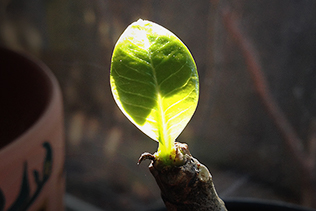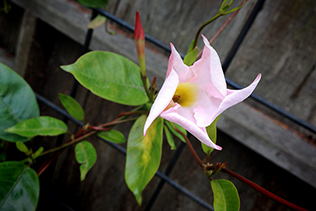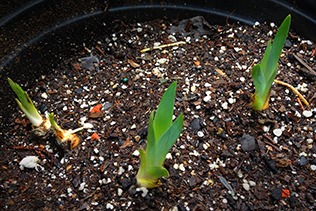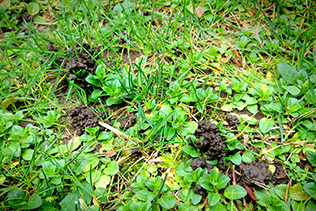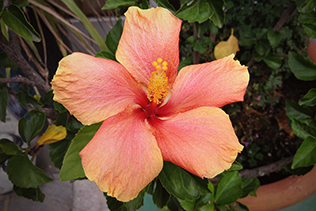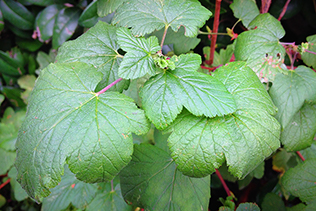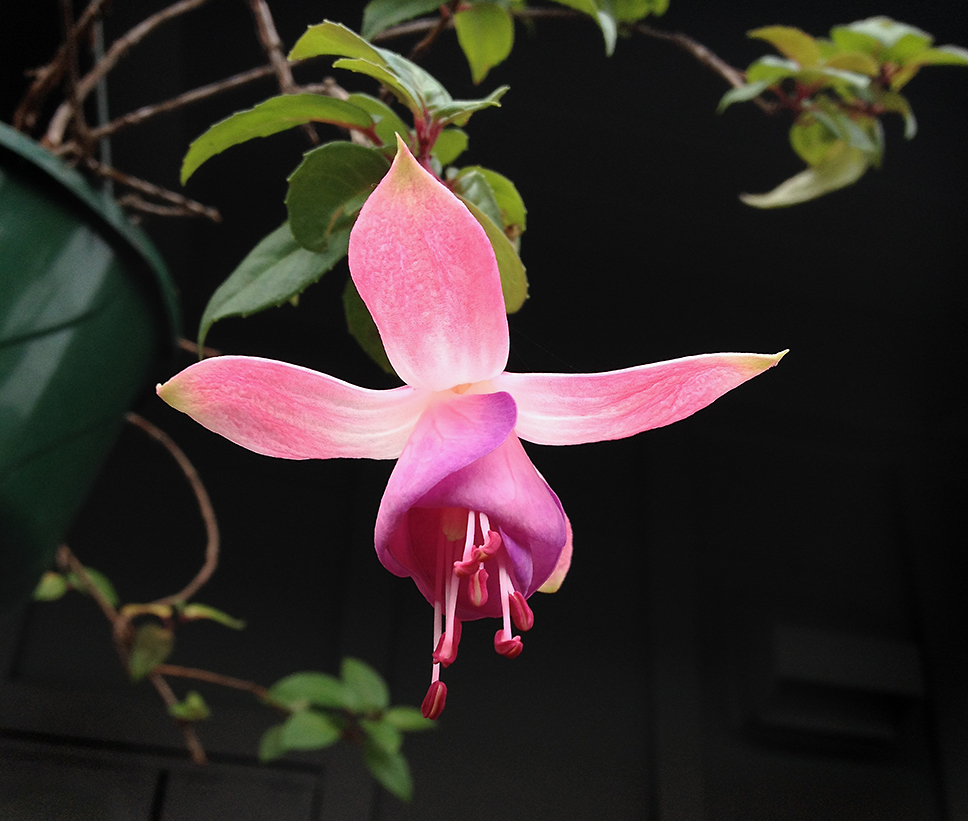
“Weather means more when you have a garden. There's nothing like listening to a shower and thinking how it is soaking in around your green beans.”
– Marcelene Cox
1/16/18:
Spring is heralded as the supreme season for new growth, but here in the temperate climate of coastal California, plants can spring to life during the warmer spells of our Winter. The peas and a few lettuces that I started from seed have appeared, and the free bulbs I brought home in October have sprouted little pointy leaves. I had planted six of them which looked like lilies in good potting soil, others were stored in an empty pot since I'd thought I should wait until after the last frost to plant dahlias, but they've sprouted as well, so I'm finding containers and places around the yard for them to continue to grow in. I am very curious to see what varieties of lilies or dahlias I have here.
I was also happy to discover that my plumeria wasn't dead but only dormant. It had lost all its leaves in fall (there were never more than four), but I'd brought it inside to the kitchen windowsill and gave it a tiny amount of water once in a while. It now has a fresh leaf starting at the top of the stem. This is the only plant that sprouted from seeds I bought in Hawaii. I live in USDA zone 9B, plumeria does best in zones 10-11, but I love the flowers so much I figured the seeds were worth a try.
Other plants that likewise prefer a tropical environment, such as the dipladenia and my ferns, are thriving in the balance of wet and sunny weather over the past month. On Saturday, as I dumped excess rainwater out of a fern pot that doesn't drain well, I noticed that the currant bush next to it was also looking healthier than in the past, and quickly growing branches in all directions. This is in a wooden planter with mint and newly-sprouted narcissus.
I didn't do much other garden cleanup over the past week, but I did deadhead geraniums and petunias, and picked a few dandelions out of the lawn. While I was weeding the grass and talking with Steve, he pointed out the worm castings that are all over the surface of the lawn. It seems we have a large "nightcrawler" population, which is good news for the soil.
Clicking on the cropped images below will show the full image in a new window.
As I travel around town, I've observed that other yards and landscaped areas are in a similar state to mine: some bare branches of recently-pruned bushes among a lot of soggy, lush green undergrowth.
In general, I've started to pay closer attention to what fellow gardeners are planting out here, and in what sort of conditions (sunlight levels, soil types). I visited my friend Cari's house on Sunday, and checked out the plants on her patio. She has some nice potted succulent arrangements, and hibiscus, which are in full bloom. I briefly had a hibiscus about 16 years ago, and figured when it died that I hadn't tried hard enough to give it proper care, but I'm considering adding a new one now that I know a lot more about gardening. Apparently hibiscus flowers attract butterflies, and can be used to make a healthy and flavorful tea!
